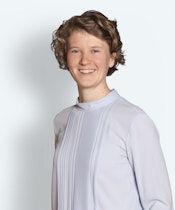At a press conference on 6 December 2022, the Norwegian Minister of Petroleum and Energy Terje Aasland presented a comprehensive package with a number of clarifications of the framework conditions for awarding offshore wind licences in the Sørlige Nordsjø II and Utsira Nord offshore wind areas.
The Norwegian Government intends to announce the first phase of Sørlige Nordsjø II and Utsira Nord by the end of the first quarter of 2023.
The consultation package that has been circulated for consultation, with a consultation deadline of 6 January 2023, presents the government’s proposed framework conditions for offshore wind in the Sørlige Nordsjø II and Utsira Nord areas, including prequalification criteria for Sørlige Nordsjø II, qualitative criteria for Utsira Nord, and the allocation, auction and support scheme model.
Prequalification criteria and auction model for Sørlige Nordsjø II
In the consultation document, the government presents proposals for prequalification criteria, an auction model and a potential support model for Sørlige Nordsjø II. The consultation document can be read here (in Norwegian).
The government has previously announced that a prequalification of the developers competing for projects in Sørlige Nordsjø II will be conducted. There will inter alia be a cap on the number of applicants who may be prequalified. The cap on the number of prequalified applicants has not yet been set, and in the consultation document the government requests input on how many developers should be permitted to be prequalified.
To be prequalified, an applicant must fulfil all the minimum requirements for all prequalification criteria. Where several parties wish to develop projects together, such parties may be prequalified jointly, as a consortium. For such consortiums, the parties are required to have entered into a binding cooperation agreement.
For developers wishing to be prequalified, the Ministry inter alia proposes a requirement for the developers to be able to document the following criteria:
- Ability to execute – Applicants must be able to document satisfactory technical expertise and financial strength, and fulfil relevant HSE requirements.
- Sustainability – The development of an offshore wind industry must take place on a sustainable basis that takes climate and the environment into account and safeguards coexistence.
- Positive effects for local industry – The development must contribute to local industrial development by providing experience and competence development to the supply chain.
For each of the criteria, a grade from 0 to 4 is set, where 4 is the best grade. It has not yet been determined how the criteria will be weighted against each other. See here for further specification of the prequalification criteria.
After the prequalification process has been completed, the first project (first phase) of Sørlige Nordsjø II will be awarded to one developer, or consortium, based solely on a monetary auction. The winner of the auction will be granted a time-limited exclusive right to undertake a project-specific impact assessment and to apply for a licence within the field.
To achieve an efficient allocation of society’s resources, and to ensure the lowest possible level of support, the Ministry proposes that the auction be conducted as a combination auction. In a combination auction, an open bidding round will first be held, in which both bidders and bids will be public. When only two bidders remain, a phase of concealed bidding will begin. In the consultation document, the government requests input on the preferred auction model.
The consultation document states that the government envisages that the first phase of Sørlige Nordsjø II can be implemented without state support, but that the government wishes to facilitate an allocation model that allows for support if necessary. The government therefore considers it appropriate to propose that the combined auction be linked to a two-sided contract for difference with the future licence holder. The government refers to experience from other countries showing that contracts for difference are appropriate for developing offshore wind projects, and that a contract for difference approach has been the preferred support model among the offshore wind developers, compared to investment support.
The Ministry proposes a support model comprising 1,400 of the 1,500 MW permitted to be produced in the first phase of Sørlige Nordsjø II, and over a period of 15 years. The support scheme will also have an upper cap on the total support amount that can be disbursed under the contract for difference. The Ministry is also considering setting a reservation price prior to the auction, stated in NOK/kWh. Accordingly, all bids must lie below this stated reservation price. The Ministry will also consider whether a cap should be set for payments from producer to state.
Qualitative criteria and support scheme for Utsira Nord
In the consultation document for Utsira Nord, which is available here, the government presents a proposal for an allocation model with qualitative criteria and a proposal for the support model for Utsira Nord.
It has previously been announced that the Utsira Nord areas will be awarded on the basis of qualitative criteria. The qualitative criteria are inter alia intended to facilitate innovation and technology development within floating offshore wind.
In the same way as for Sørlige Nordsjø II, applicants wishing to apply jointly as a consortium can also do this for Utsira Nord. Furthermore, applicants will be awarded a grade for each of the predefined criteria, on the same scale as for Sørlige Norsjø II. For Utsira Nord, the Ministry proposes that no prequalification is held, but the criteria used in prequalification for Sørlige Nordsjø II will be included as part of the qualitative assessment of the applicants in connection with the allocation of areas within Utsira Nord.
In the Ministry’s preferred award model, the three applicants that together are ranked highest based on the qualitative criteria will each be awarded their own project area, and will later have to go through a competition for support (which, however, will only be awarded to one of the projects).
Applicants will be assessed according to the following criteria:
- Cost level in 2030 – The criterion is intended to ensure that the projects awarded are cost-effective and contribute to making floating offshore wind commercially competitive as quickly as possible. The criterion will also help to reduce the state’s costs by limiting the support necessary to achieve floating offshore wind projects in the future.
- Contribution to innovation and technology development – As floating offshore wind technology is further developed, significant cost reductions are expected. This will also contribute to competence enhancement and to the probability that floating offshore wind as a concept will be spread to other parts of the world.
- Ability to execute – Applicants must among other things be able to document satisfactory technical expertise and financial strength, and fulfil relevant HSE requirements.
- Sustainability – The development of an offshore wind industry must take place on a sustainable basis that takes climate and the environment into account and safeguards coexistence.
- Positive effects for local industry – The development must contribute to local industrial development by providing experience and competence development to the supply chain.
The full consultation document can be read here (in Norwegian).
The government has also considered alternative support models for the fields in Utsira Nord. The Ministry is seeking input on the preferred support model. The two most relevant models are sole investment support and two-sided contracts for difference. Regardless of the final design of the support model, a maximum amount will be set for how much support can be disbursed to the developer.
The consultation deadline for both Sørlige Nordsjø II and Utsira Nord has been set to 6 January 2023.



